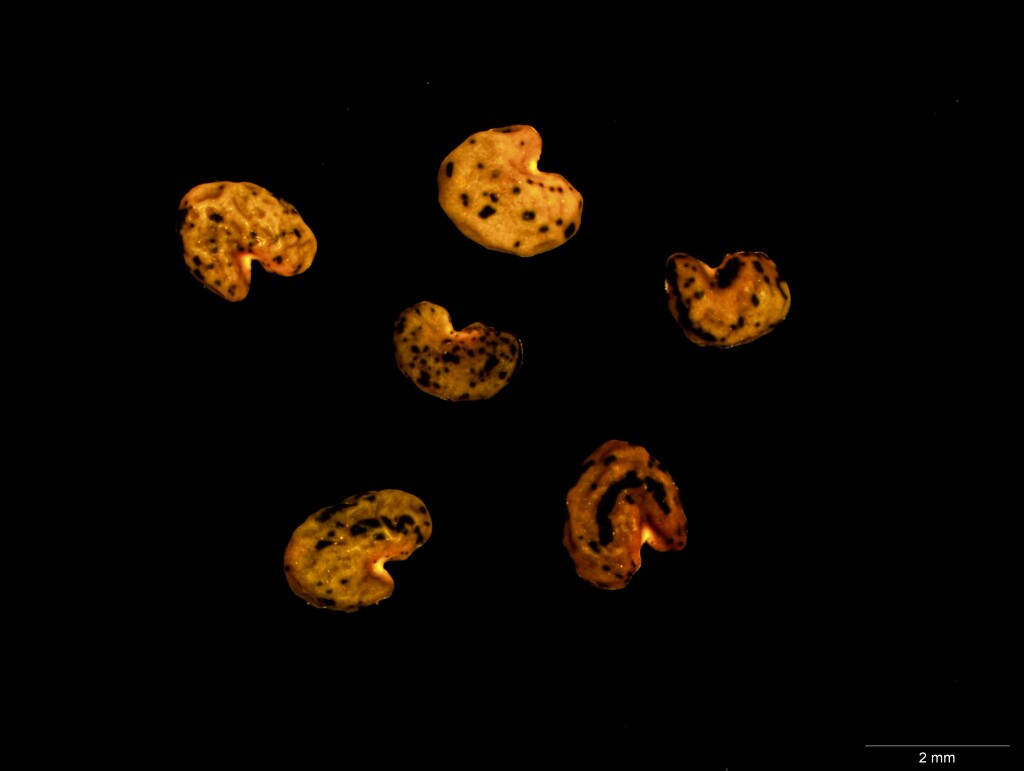Swainsona microphylla
A.Gray Small-leaf Swainson-peaProstrate, decumbent or ascending perennial herb, to c. 60 cm tall; stems sparsely or densely pubescent with appressed or spreading basifixed hairs, sometimes virtually glabrous. Leaves mostly 5–15 cm long; leaflets mostly 21–41, broad-cuneate to orbicular, 1–5 mm long, 1–5 mm wide, apices usually retuse, often mucronate, both surfaces glabrous to pubescent, often deciduous; stipules 1–4 mm long, broad at base, apex lanceolate and acuminate. Racemes mostly 10–25-flowered; flowers 5–10 mm long; calyx glabrous to pubescent, teeth usually much shorter than tube; petals white, pink or purple; standard 6–8 mm long, 6–9 mm wide, broad-ovate, tapered at base or clawed; keel 4.5–7 mm long, narrow-obtuse, apex rounded or beaked; style tip truncate with an arc of stiff hairs behind. Pod globular to broad-obloid, mostly 5–10 mm long, 3–8 mm wide, inflated, glabrous, stipe to c. 1 mm long; seeds to c. 8, cordate, c. 1.5 mm long, olive-green to brown. Flowers Jun.–Oct.
MuM, VRiv, MSB, RobP, MuF, EGU, VAlp. Also WA, NT, SA, Qld, NSW. In Victoria mainly confined to the far north-west but also near Echuca and on the upper Snowy River near Willis. Grows mostly in light soils on sand-hills and sandplains.
Jeanes, J.A. (1996). Fabaceae. In: Walsh, N.G.; Entwisle, T.J., Flora of Victoria Vol. 3, Dicotyledons Winteraceae to Myrtaceae, pp. 663–829. Inkata Press, Melbourne.
 Spinning
Spinning


